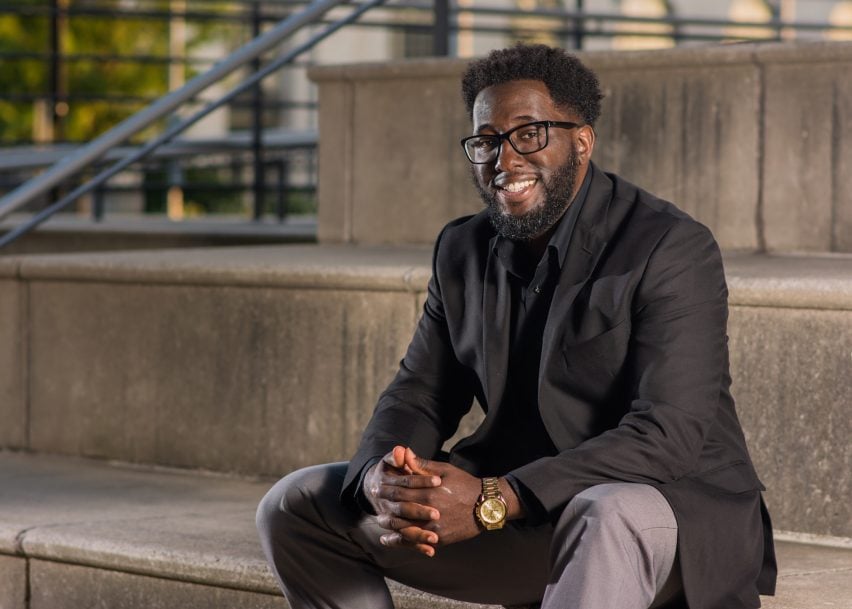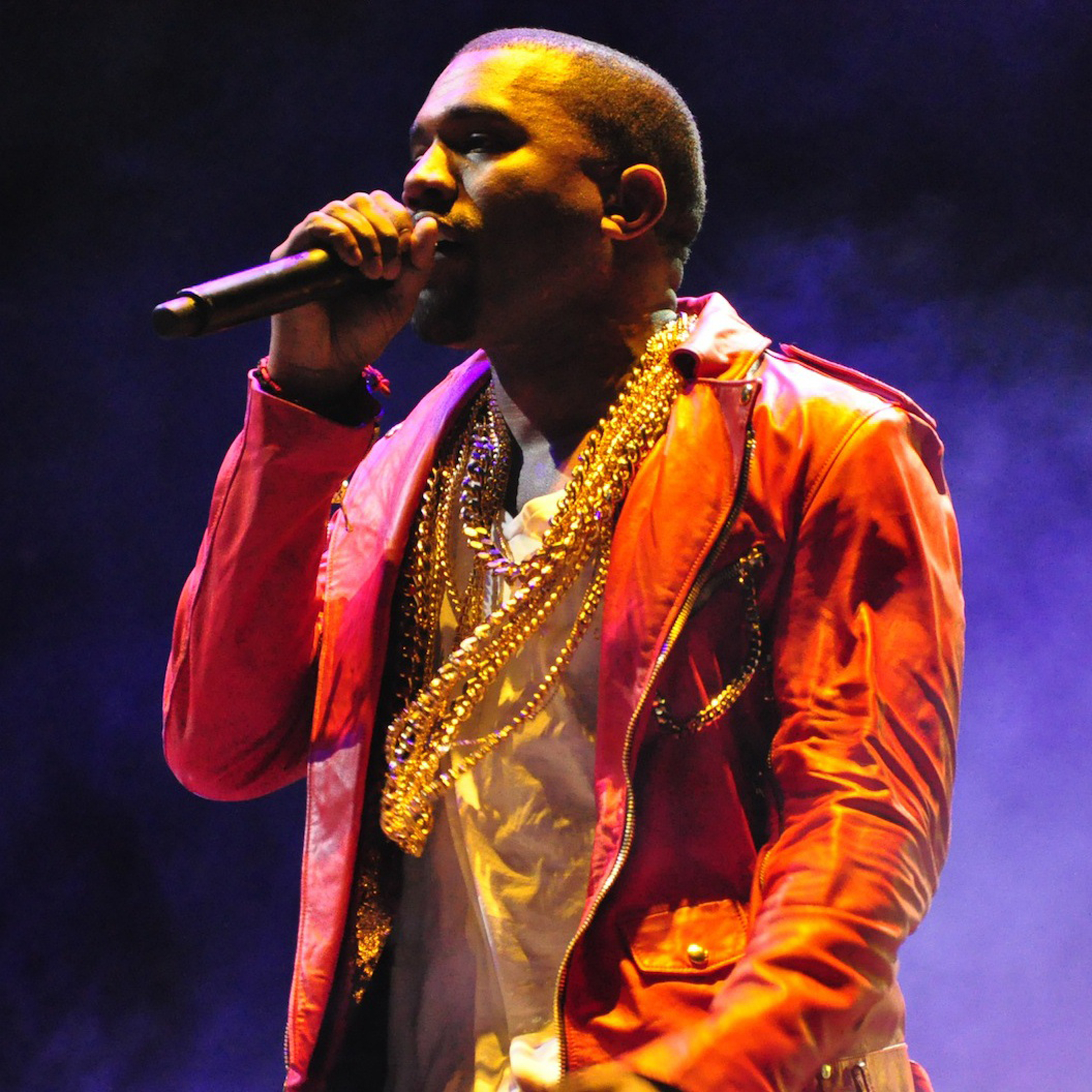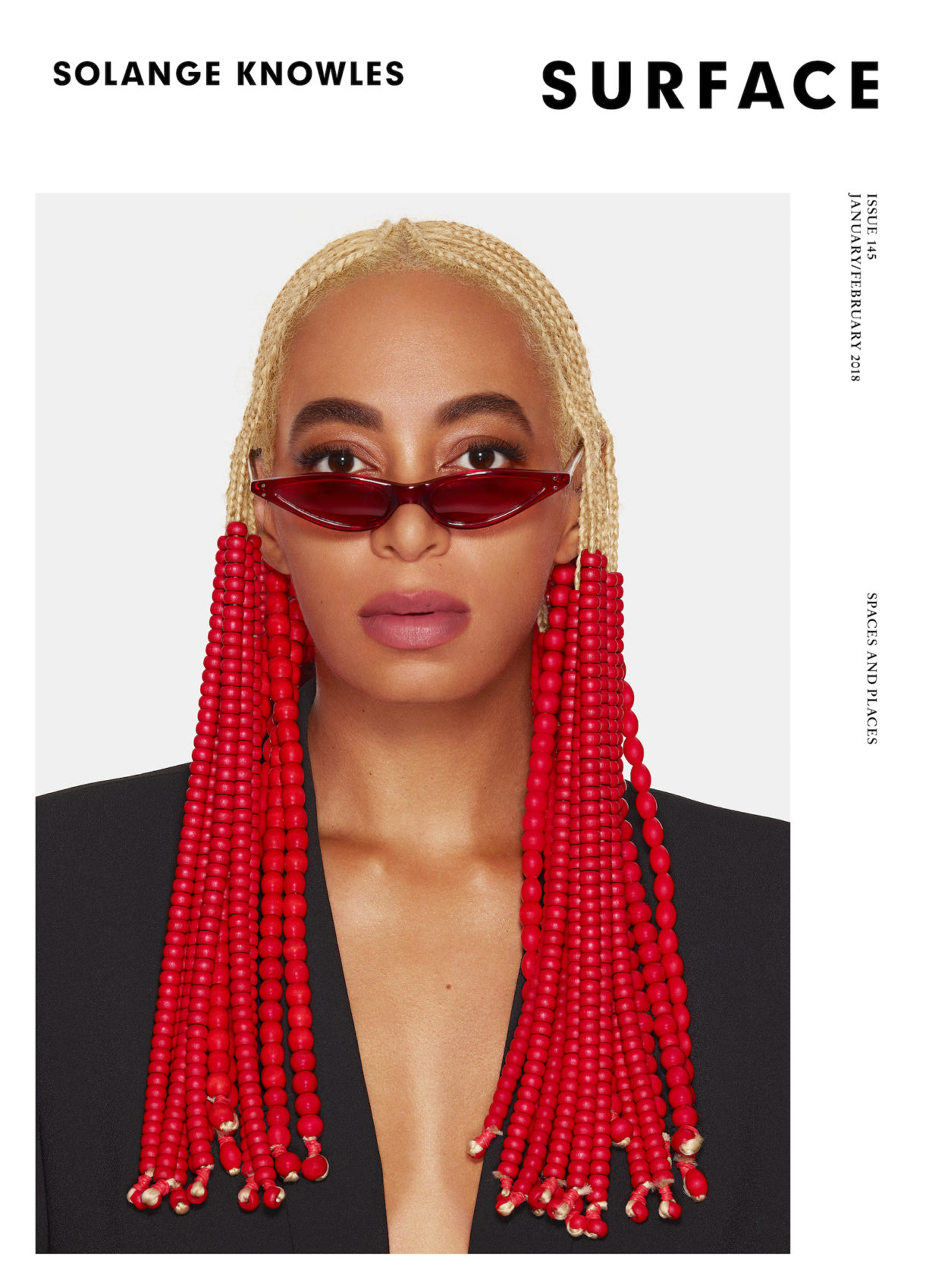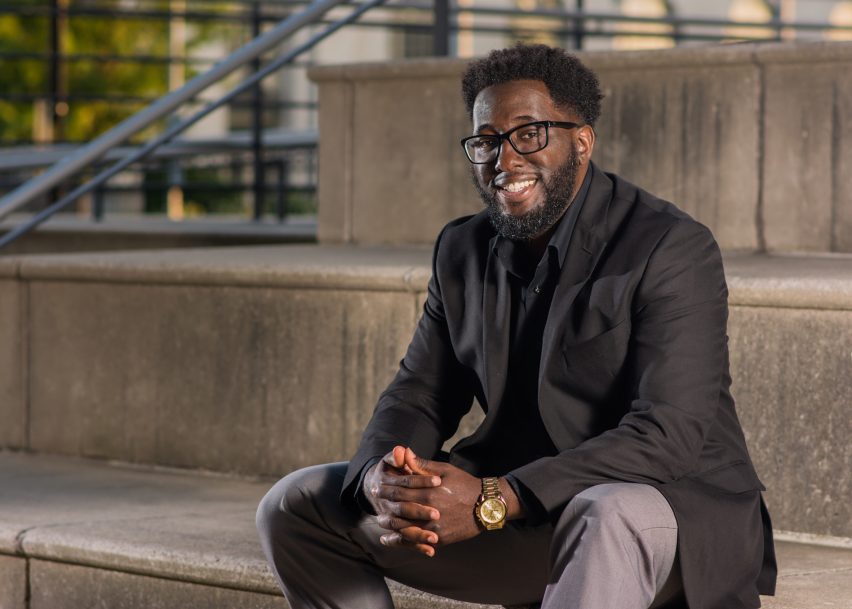By Eleanor Gibson
Dezeen, January 23, 2018 —
Known as the “hip hop architect”, Michael Ford helps kids from minority backgrounds discover architecture through music. He spoke to Dezeen about the importance of black musicians like Kanye West and Pharrell Williams, who heavily promote their involvement in architecture, in improving diversity in the profession.
Ford told Dezeen that his aim is to spread the word about architecture – commonly “represented by white males” – to underrepresented groups.
“Historically architecture has not been promoted to communities of colour,” said Ford. “Since architecture existed, the 400th black woman got her license not long ago.”

Michael Ford. Detroit-based Michael Ford gained his reputation as the Hip Hop Architect by drawing parallels between the urban design and rap music.
Ford runs free camps that teach children in minority communities about architecture, using music as an engagement tool. He believes that musicians like Kanye West, Pharrell Williams and Solange Knowles – who are all vocal about their interests in architecture and design – will be the ones to help get kids interested in these fields, rather than architects.
“Just having Kanye talk about it can do more than me or 1,000 people like me,” Ford told Dezeen. “Kanye, with one sentence, one Instagram post, can make people around the world take interest in something that I can spend a lifetime talking about.”

“Hip Hop Architect” Michael Ford says that rapper Kanye West is helping architecture to reach a more racially diverse audience
“As media now looks at artists beyond trapping them to being just rappers and singers, every day they explore their other artistry,” he added. “I think this diversity will finally start to kick in as we get more champions to talk about it.”
West has been extremely vocal about his involvement in architecture projects and regularly speaks publicly about his passion for the subject. His widely publicised talk with architecture students at Harvard University in 2013 gained a huge amount of media coverage.
Pharrell Williams has similarly expanded his portfolio from recording artist and producer to include architecture and design projects, like collaborations with late Pritzker Prize-winning architect Zaha Hadid and fashion brand G-Star Raw. He is also currently working on designing a youth centre in his home town Virginia with Miami-based architect Chad Oppenheim.
Like West, Williams’ fame as a musician enables him to quickly and widely promote architecture to an audience that might otherwise go unreached, according to Ford.

Recording artist Pharrell Williams is also among the group of famous black musicians who are making public moves into architecture and design
“The work that Pharrell’s doing, just his name, he’s doing a lot to push diversity,” said Ford, who spoke to Dezeen at the Interior Design Show Toronto last week.
“When Pharrell Williams talks about his work that’s great,” he continued. “Even if that’s not his mission, just the fact that he is talking about architecture makes more people interested in architecture, people who may not have ever known about it. They may not have known that architecture can have as great of an impact that it can.”
Williams and West are among a host of rap, hip hop and RnB artists that champion architecture and design.
Solange Knowles – Beyoncé’s sister and an established artist in her own right – spoke about her love of design and sculpture in a cover interview with Surface Magazine, following a concert she gave at the Frank Lloyd Wright-designed Guggenheim Museum.
A$AP Rocky, AKA Rakim Mayers, recently said he would “probably be an interior decorator” if he wasn’t a rapper during a front-cover interview with GQ. Tinie Tempah, Will.i.am and Lenny Kravitz have also all dabbled in design in one way or another.

Others key influential figures include Solange Knowles, who declared her passion for design and sculpture in the latest issue of Surface Magazine
Ford gained his reputation as the Hip Hop Architect by drawing parallels between the urban design and rap music.
He co-founded the Urban Arts Collective with the mission to promote arts and architecture to minority groups, with initiatives including 400 Forward, which aims to increase the amount of black women licensed as architects in the US.
The free Hip Hop Architecture camps he runs are funded by Autodesk and take place across America, and Ford believes their success cements the notion that hip hop is proving an effective way to increase diversity in architecture.
“We can’t go about diversity in the same way that we’ve been doing it before,” he said. “It’s not about money – there has to be some type of call to action for the individuals who are looking to come into the profession.”
“For me hip hop has been that medium to get that call to action,” Ford continued. “Over the years people have begun to see it as a tool that can be this catalyst for diversity. It gives youth an opportunity for an immediate contribution, they can use architecture to solve issues in their communities”
Read on for an edited transcript from our interview with Michael Ford:
Eleanor Gibson: You have a clear message about how to increase diversity in the architecture industry, but I was wondering if you have any ideas about how to improve it for other minorities?
Michael Ford: The organisation that I co-founded is called the Urban Arts Collective, which I started with two other friends from Detroit. The Urban Arts Collective is the organisation that I run the Hip Hop Architecture camps through and our first mission for diversity was about just minorities in general.
Recently the 400th black woman became a licensed architect. Since architecture existed, the 400th black woman got her license not long ago. Now we have established an organisation called 400 Forward, which looks at creating the next 400 female African American architects.
I think that hip hop has become the ultimate branding tool, but it’s also the best tool to bring recognition to any situation, whether it’s looking at global warming, or just the lack of diversity. I think one way that we could use hip hop to talk about the lack of diversity is trying to bring those situations up in a message that will reverberate around the world a lot faster than any other medium.
Hip hop can get the message around the world in a day, and you could have someone in China and Europe to listen to it in a day. So if there’s a way to bring that message, I will say that’s maybe a challenge for you, how can we use hip hop to promote diversity for other groups, but it is there.
Eleanor Gibson: Why do you think the architecture industry lacks diversity?
Michael Ford: Historically architecture has not been promoted to communities of colour. One of the other challenges is that architecture as a profession has always been represented by white males, which is not a problem – I think architecture is a great profession but we are, as the entire world, missing space for perspective from a diverse set of professionals. It’s also an expensive career – going to college for four, five or six years is an expensive endeavour.
‘Since architecture existed, the 400th black woman got her license not long ago’
So there are a number of things that have created that diversity problem in architecture. So it’s a very multi-faceted, cross-disciplinary attack that has to happen to make it more diverse.
Eleanor Gibson: You briefly mentioned in your talk [at IDS Toronto] that you were targeting publications outside of the architecture industry. What are the other ways that it could reach a wider audience?
Michael Ford: I think popular culture. If you look at Grey’s Anatomy, if you look at most professions they have some type of TV show or movie that the characters are representing different professions, but in architecture, interior design, we have very few.
So I think that another opportunity is getting outside of the typical architecture publications, and starting to publish in places like ESPN, and movies – that’s where you’re going to reach that diverse population
Eleanor Gibson: Recently there’s been more focus on the lack of diversity in the profession, do you think that this has instigated any change yet?
Michael Ford: Speaking specifically on the hip hop architecture, I have noticed a change where some people’s first reaction it is that they don’t want anything to do with it, or it has no place in architecture.
The entire world is missing space for perspective from a diverse set of professionals
But over the years people have begun to see it as a tool that can be this catalyst for diversity. It gives youth an opportunity for an immediate contribution, they can use architecture to solve issues in their communities
We can’t go about diversity in the same way that we’ve been doing it before, it’s not about money – scholarships, scholarships, scholarships – there has to be some type of call to action for the individuals who are looking to come into the profession and for me Hip hop has been that medium to get that call to action.
Eleanor Gibson: How did you get into architecture?
Michael Ford: I grew up in Detroit, I wanted to be a car designer. That wasn’t going to happen because cars change every year, I learnt that pretty quick. I got introduced to architecture, my dad wanted to be an interior designer so I saw his portfolio – he went to school for a couple of years, never finished, had us as kids.
After seeing his work, I eventually went to Cass Tech in Detroit. Cass Tech High School has an architecture programme, so it’s a college prep school. That’s when I got my first deep introduction to architecture.
Eleanor Gibson: What do you think people like Pharrell Williams and Kanye West are doing for the architecture industry?
Michael Ford: They are doing a lot. Pharrell Williams was going to be the keynote at the AIA conference in Chicago a few years ago and just him announcing that he was going to be the keynote, no exaggeration, me and about 30 other people who had never been to an AIA conference in our entire professional career, we signed up the day it was announced.
A very multi-faceted, cross-disciplinary attack has to happen to make architecture more diverse
So him and the work that he’s doing, just his name, he’s doing a lot to push diversity. Even if that’s not his mission, just the fact that he is talking about architecture makes more people interested in architecture, people who may not have ever known about it. They may not have known that architecture can have as great of an impact that it can. So when Pharrell Williams talks about his work that’s great.
Kanye West, what doesn’t Kanye West bring to any table? Kanye is one of the most skilled hip hop artists of all time, producers and beat makers, and his skill has translated into the built environment.
So again just having Kanye talk about it, can do more than me or a 1,000 people like me. Kanye with one sentence, one Instagram post, can make people around the world take interest in something that I can spend a lifetime talking about.
Eleanor Gibson: Are there any other figures that you can point out that are doing similar?
Michael Ford: Yeah I think there’s a lot of people, artists like A$AP Rocky who is a rapper from the Bronx, he actually was on the cover of GQ and he said that if he wasn’t a rapper he would have been an interior designer. You have artists like Swizz Beatz also in the Bronx, the list goes on and on.
Solange, Beyoncé’s sister, just recently had a publication about her deep interest in interior design and architecture, and sculptures she’s created.
So as media now looks at artists beyond trapping them to being just wrappers and singers, every day they explore their other artistry, I think this diversity will finally start to kick in as we get more champions to talk about it.










